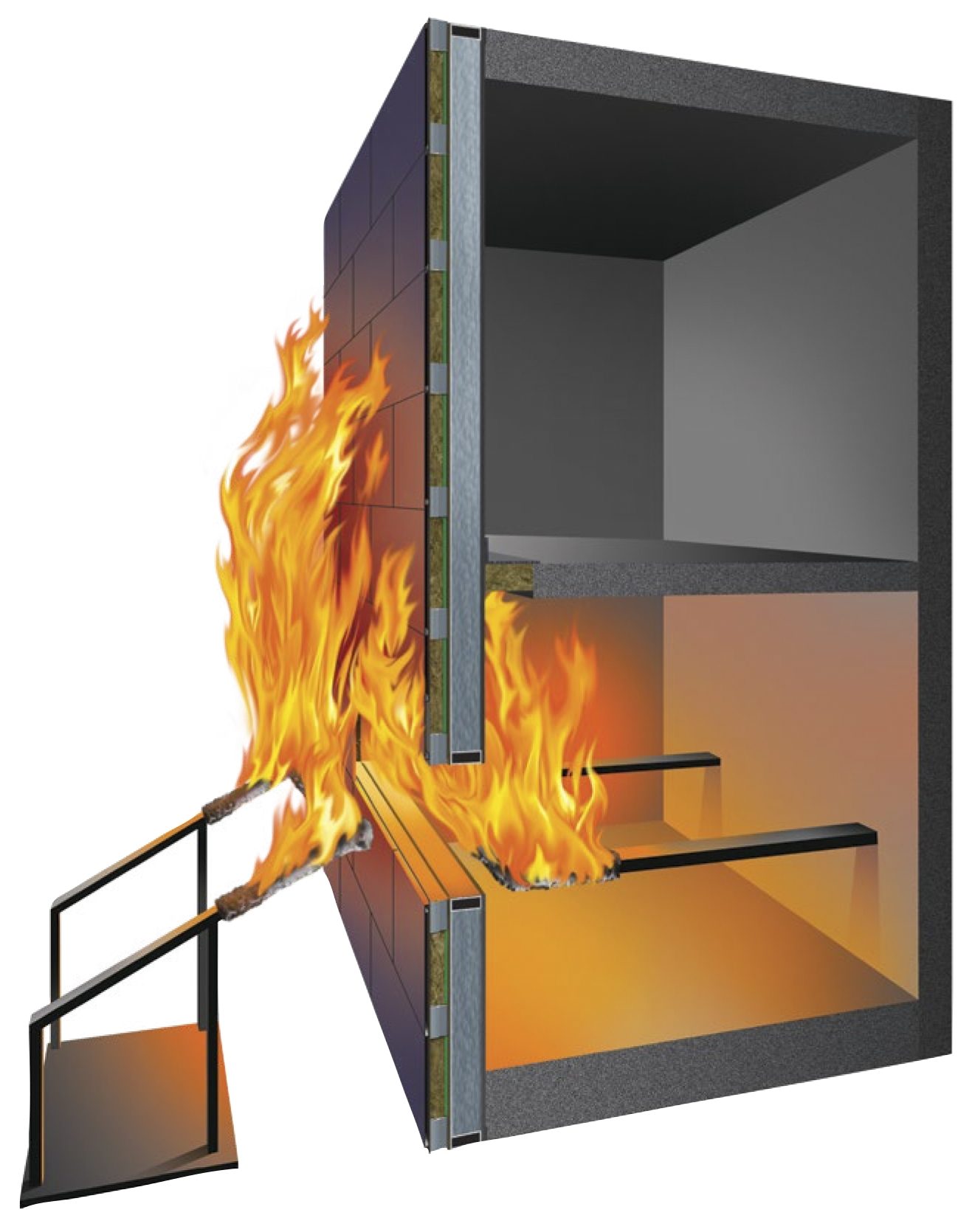Firestopping, An Integral Part of Passive Life Safety Systems
Opportunistic and stealthy, fire will always seek out the easiest path of propagation. Firestopping materials properly installed in the enclosure are integral to slowing the spread of fire and smoke and extending time for occupant egress. These materials—including mineral wool insulation, hangers, attachments, mullion covers and firestop sealants—impede the ability for fire to penetrate voids at critical junctures, such as the intersection of a rated floor assembly and the non-rated curtain wall. This mode of action supports additional time for occupants to exit the building and also allows firefighters time to reach the floor of fire origin.
The intense temperatures and pressure that occur during a fire can give flames an increased momentum, threatening both the structural integrity of the enclosure and the priceless lives of occupants and firefighters. For that reason, ASTM E2307 subjects firestopping materials to extreme conditions reflective of an actual fire situation in a commercial enclosure. Such testing clearly demonstrates a crucial aspect of material science and how the materials perform specific roles in the enclosure. Simply stated, “parts are not parts.” The specific process for manufacturing a product has an influence on its performance in a given application and in specific conditions, such as a high-rise fire.

